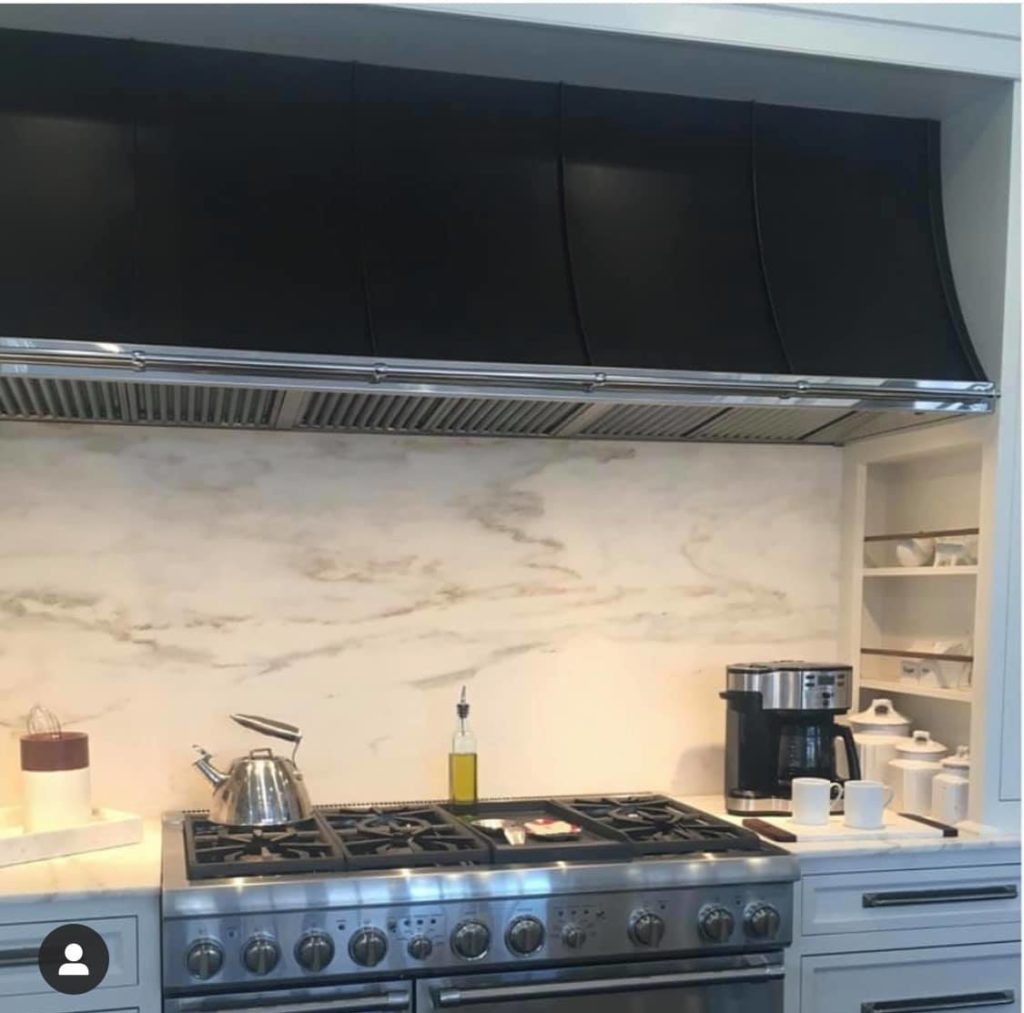The Exhaust
A vented or ducted system channels air out of your home via ductwork. The keyword is out because it cannot simply be vented to the attic or another room in the home. Due to this, it’s likely more appropriate to opt for a wall-mounted hood to install on an exterior wall. This means the ducting is more efficient because it’s shorter. The further from an exterior wall you opt for installation, the more complicated it becomes, and more expensive.
Of course, this is not a concern if you choose a ductless system as this simply filters the air and recirculates it back into the room. This option does involve more maintenance, as they require filter changes and more cleaning.
The Layout

The layout will have a large say in the matter as the space you’re working with will influence where and how the hood fits best. Ideally, you should be installing the hood at least 24 inches above the stovetop. However, if you are in doubt, the manufacturer will offer recommendations.
Now, this will depend on the size and design of the hood you choose, but it’s possible to incorporate it into the cabinets, wall-mount, suspend from the ceiling, or make it part of an existing canopy. Additionally, you can opt for a chimney hood that telescopes so that it can expand during use and retract when it isn’t needed. An ideal option for a minimalist look or a smaller kitchen.
Power, Energy, And Noise
If you want a powerful fan, then your space will dictate just how powerful you can go. The best way to calculate this is to calculate the volume of the kitchen by multiplying the height of the ceiling with the width and length of the kitchen. Based on this number, you can select a range hood that is powerful enough to do the job you’re asking it to do. You want a hood that can replace, filter, or clean your air no fewer than eight times each hour.
So, how do you know how powerful a ventilation hood is? Take a look at the CFM. To give you an idea of what you’re looking at, a 1,000 CFM hood will remove the air from a 10’x10’x10′ room in just one minute. The best way to determine how much air a ventilation hood can replace hourly, multiply the CFM number by 60 (the number of minutes in an hour).
Now we come to the big factor that sways hearts and minds – the noise. There’s no use investing in a powerful hood only for it to drown out your thoughts. The louder it is, the more annoying it will be, and the less likely you are to run it as often as you need to. Ducted hoods are the quieter option, but if you want to go ductless, then look for a model that aims to draw air to the hood’s perimeter. It’s more efficient and it’s much quieter. Your best bet is to visit a showroom and hear it in action.
The Style
The style is just as important as the rest of the factors on your list because you want it to fit with your overall aesthetic and you’d like a design that meets your personal taste. As such, you will want to consider a variety of finishes, how much maintenance they require, and whether the design will fit with the kitchen’s look. For example, if you want to create a rustic look, then a copper hood would work well. If you’re aiming to go ultra-modern, then think more stainless steel.
If you want to use your ventilation hood as a statement opportunity, then an unusual placement or dramatic color/texture is the way to go.
The Cost
Like any appliance, the cost of a ventilation hood varies wildly. It will all depend on the features, size, materials, and power that you choose. Your best bet is to determine exactly what you want and then do some research about what you actually need. Somewhere in the middle, you will find the answer and from there you can do further research on the right fit for your home.
Then, it’s time for installation. A job which you should enlist the professionals to tackle.
